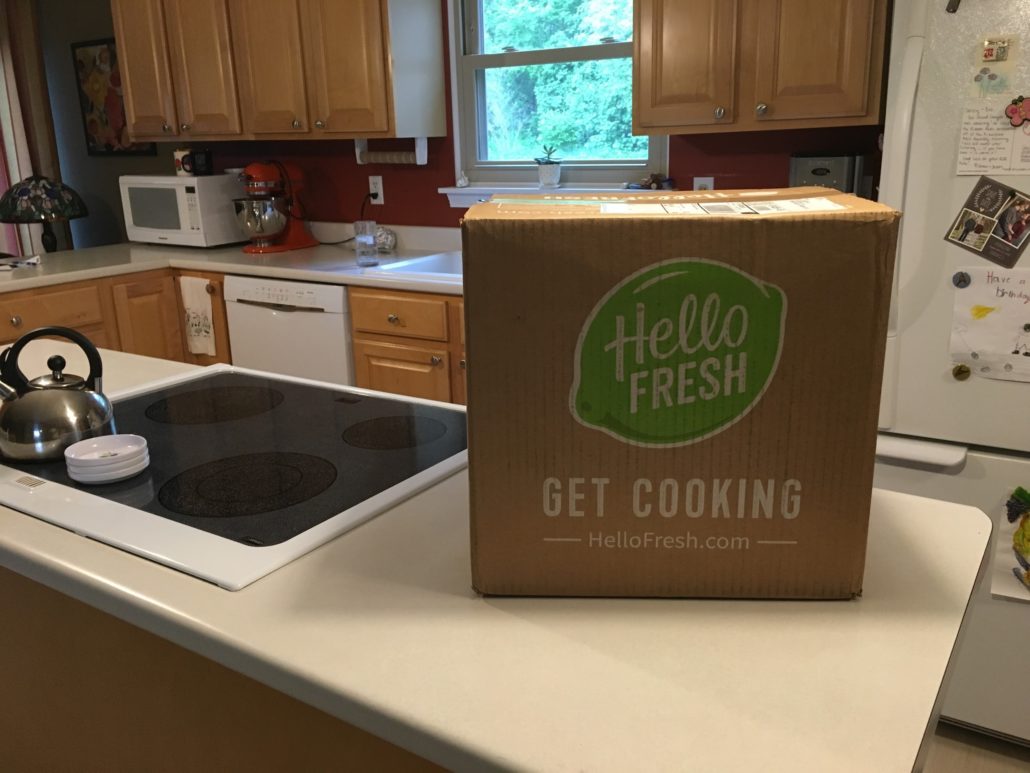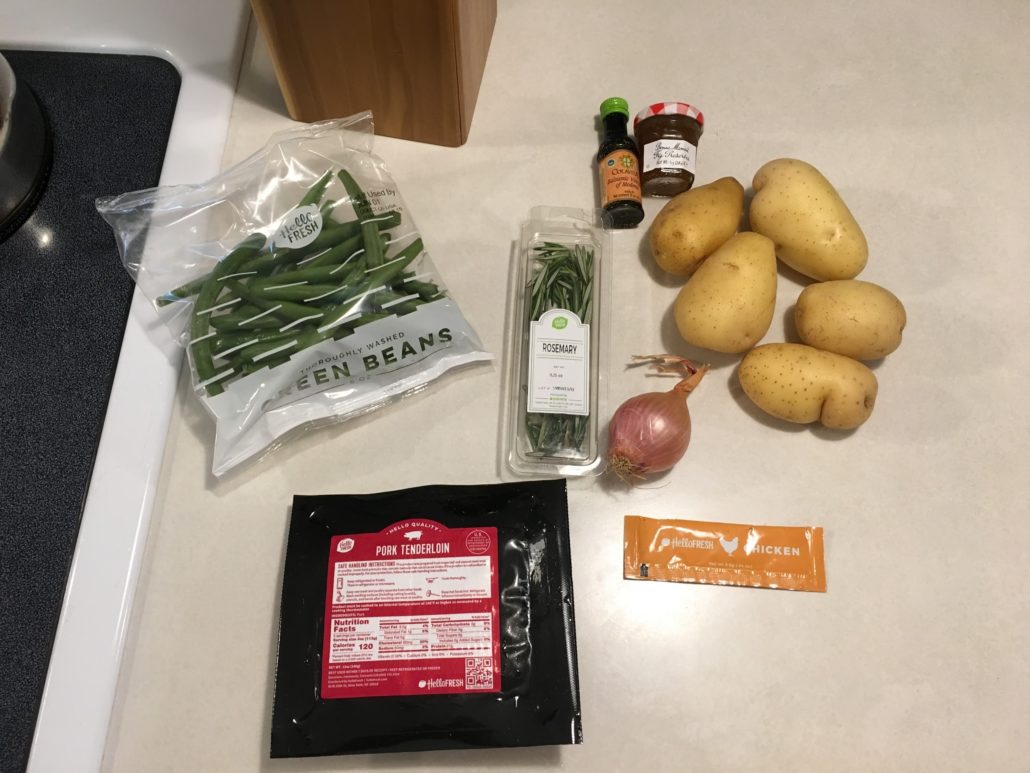Written by: Beau Brockett Jr.
A while back, I came across a massive sale at HelloFresh, one of America’s prominent meal kit companies. I could get fresh ingredients for two, two-serving recipes shipped right to my doorstep for $10.
A two-fold opportunity emerged.
First, being alone for the week, I needed dinner meals that fit my budget and were kind to my novice cooking capabilities.
Second, I could put a meal kit company to the test. Meal kit companies like HelloFresh or Blue Apron often get lukewarm receptions from sustainability-conscious consumers. This industry delivers the exact ingredient portions needed for a meal, nothing more.
But beneath meal kits’ near-zero food waste is a lot of packaging.
My week’s meal plan arrived with an 18-pound thud. Most of the box’s weight was made up in packaging from the few-bounce bottle of white vinegar to the plastic case for three rosemary sprigs to the enormous insulation packets needed to keep raw meat frozen from New York to Michigan.
A consumer can purchase fresh, non-GMO, organic or vegan meal kit plans that reduce food waste footprints to ant tracks, but consumers cannot escape the packaging. To buy or to avoid?
One big box, many components
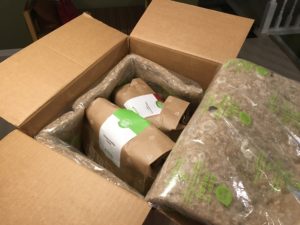 Peering into the delivered box, I was greeted with insulation, but not of the icy variety. Instead, biodegradable cotton and plant fiber covered two paper bags, one for each meal’s ingredients. Instructions for proper disposal were patterned on the insulation’s plastic wrapper.
Peering into the delivered box, I was greeted with insulation, but not of the icy variety. Instead, biodegradable cotton and plant fiber covered two paper bags, one for each meal’s ingredients. Instructions for proper disposal were patterned on the insulation’s plastic wrapper.
Beneath the bags was the source of the box’s weight: the refrigerant. Like the biodegradable insulator, the refrigerant provided instructions for disposal. Unlike the other insulator, the refrigerant was not natural, albeit non-toxic and water soluble.
Beneath the massive chunks of insulation were two small packages of meat. Pounds of refrigerant for two meat packets. 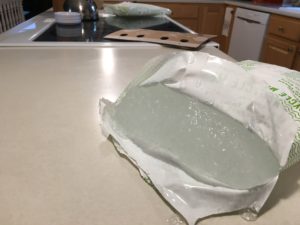
I moved on to the paper bags. I was surprised to see that the hardier produce within was free of packaging. Beside them were foods like tubed sour cream, a baggie of green beans and a capsule of fig preserve.
Since its creation, over 8.3 billion metric tons of plastic has been produced; 6.3 billion metric tons is currently residing in landfills or ecosystems. More plastic is burned (11 percent) than recycled (nine percent).
Plastic manufacturing production has doubled every 15 years, largely because most plastic items, like food packaging, are single use. Plastic packaging alone accounts for 40 percent of all non-fiber plastic production.
To HelloFresh’s credit, all packaging materials, save for the refrigerant, were recyclable or biodegradable. Clear instructions for disposal were provided on both sets of insulation.
HelloFresh knows it has a packaging problem. After canceling my meal plan, the company gave me a survey online, asking why I left. One of the boxes I could check off said it was due to plastic packaging. I didn’t click it.
Why? Aside from fresh produce, which is largely free from containers in HelloFresh kits, almost everything bought at a grocery store is packaged, too. We pick up asparagus and place it in plastic bags. Within a box of graham crackers is plastic wrapping.
This is not to say that HelloFresh is better than grocery stores or that plastic is not an issue. HelloFresh packages small servings of food, meaning the plastic packaging created per ounce of food is higher than most items bought at a grocery.
Mindful plastic packaging, and the recycling of it, is an issue that HelloFresh and other food production and distribution companies must address for a sustainable future.
The spark of hope in plastic production is that plastic can be reused again and again. Food waste just rots.
The monster under the trash lid
The day I made chicken fajitas from HelloFresh, I tossed out grapes that were moldy. In the grocery store a few nights prior, I avoided buying chives and parsley for a recipe because I knew they would go bad before I used each entirely.
In 2015, the average American household threw away $640 of food. A trillion dollars, or about one-third of all food produced, was tossed globally.
According to the Food and Agricultural Organization of the United Nations, if one-fourth of food waste could be saved, 870 million people could be fed globally.
Most food waste worldwide is created in the movement from the production to the retailing of food. Yet, 40 percent of food waste is created by consumers.
What can be done? Groceries could start reporting how much food they throw away each year. The Grocery Manufacturers Association could continue their push to minimize and properly define product date vocabulary industry-wide.
Consumers can freeze fresh foods for later use. They can work ingredients for one meal into others.
It can be difficult to use food in its entirety, especially when buying novelty ingredients or when cooking for oneself. This is where meal kits can be effective.
This is also where the packaging problem arises. Does the minimized food waste outweigh the impact of increased plastic consumption?
Research completed by Norway’s Ostfold Research indicates it does, at least for meat and cheese. Ostfold analyzes the environmental performance of products, systems and services in Norway through a sustainable lens.
A slide presentation compiled by Ostfold researcher Iremlin Gram-Hanssen compares the carbon dioxide emission equivalents for producing sliced cheese and whole cheese. The emissions created from sliced cheese during production, packaging and distribution were higher than whole cheese. In consumer waste, though, sliced cheese beat out whole cheese. The difference was drastic enough to have sliced cheese create less kilograms of carbon dioxide equivalent than whole cheese throughout their entire shelf lives.
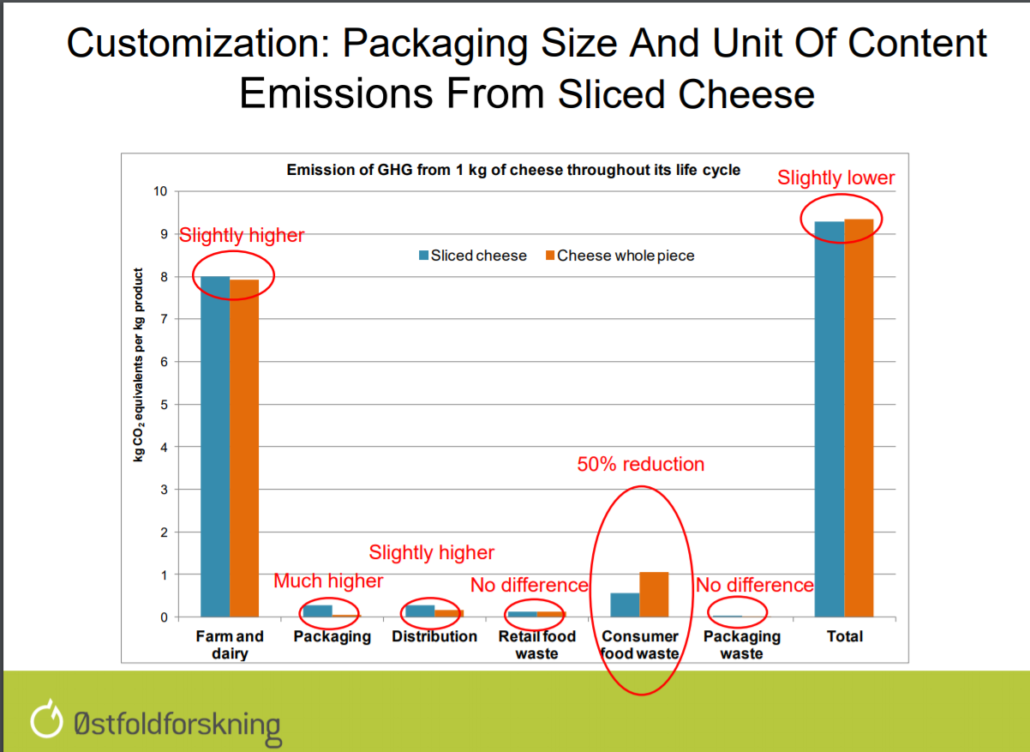
If meal kits are perpetrators of sliced cheese-like products, then the emissions prevented by lessening consumer food waste may be worth the extra packaging the sliced cheese-like products need.
Ostfold’s presentation also noted that the vast majority of greenhouse gas emissions produced by the production of meat comes from producing feed and raising cattle, not packaging.
Get a meal kit, but know its impact
Ostfold’s presentation concluded with three takeaways: correct packaging is essential in reducing food waste, the environmental impact of increased packaging is far less than the impact of food waste, and knowing recycling systems and date labelling information is essential for the customer to know.
These three takeaways apply well to meal kits and to food purchases anywhere. Know the impact of food waste, know to recycle and know how to properly read date labels on food.
Plastics are bad, but plastics’ harm can be minimized if the consumer knows to recycle. Consumer, please do so.
Food is good, but its usefulness can be minimized if the consumer does not consume it well enough. Consumer, please be mindful of what you buy.
Meal kits are booming. Blue Apron just hit the stock market. National chains like Kroger and Whole Foods are testing pick-up meal kits. Amazon, owner of Whole Foods, offers AmazonFresh Pickup at select Whole Foods locations.
Whether meal kits remain a fad purchase or an option only for upper middle class, the growing interest in meal kits means companies like HelloFresh must address consumer demands for more mindful packaging and insulation if they want their zero food waste marketing to sell.
Photos by Beau Brockett Jr.
